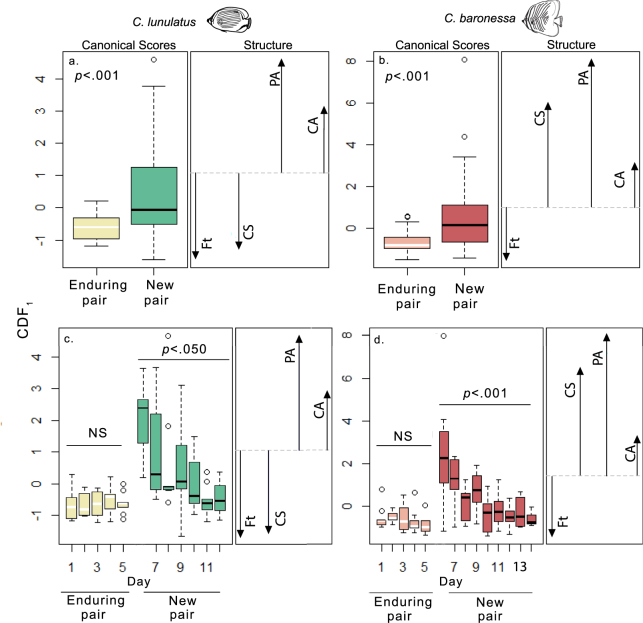Figure 5.
Changes in intra-pair relations, aggression towards competitors, and feeding bites in response to (a,b) re-pairing, and (c,d) subsequent endurance of new pairs throughout several days. Means of standardized canonical scores of the first canonical discriminant function (CDF1) are represented by box and whisker plots. Structure vectors show the relative strength (length of the vector relative to length of other vectors) and direction (+ or −) of the correlation between each contributing response variable and the canonical discriminant function. MANOVA p-value for change in activity profile in response to relationship phase (a,b) or day (c,d) is shown in the corner. (a,b) In both species, re-pairing with a new partner increases intra-pair aggression (PA). Concurrently, it (a) reduces coordinated swimming (CS) in C. lunulatus (n = 9), and (b) increases coordinated swimming in C. baronessa (n = 10). (a,b) These changes in intra-pair relations are associated with increased competitor aggression (CA) and a reduction in total feeding bites (Ft). (c,d) However, as new pairs endure, intra-pair relations recover along with recovered losses in competitor aggression and feeding bite efficiency.

